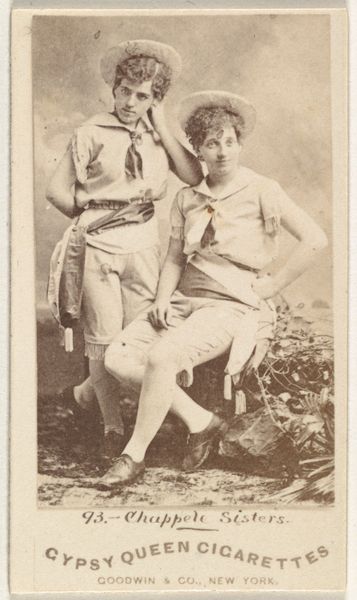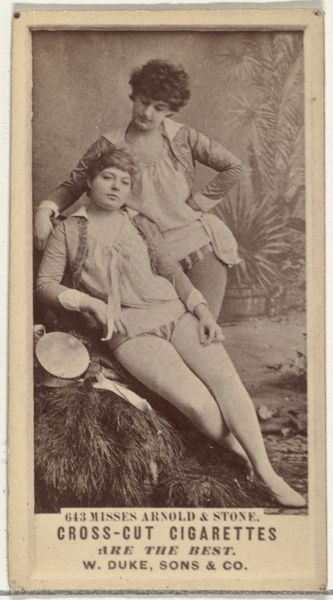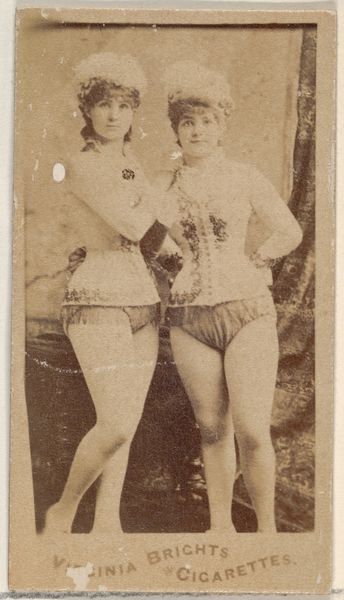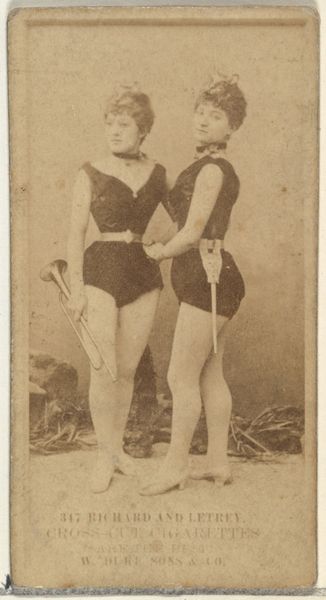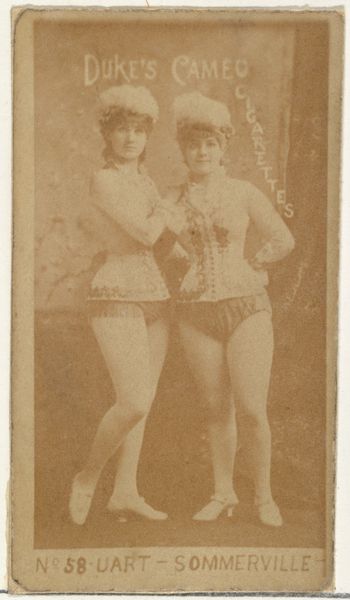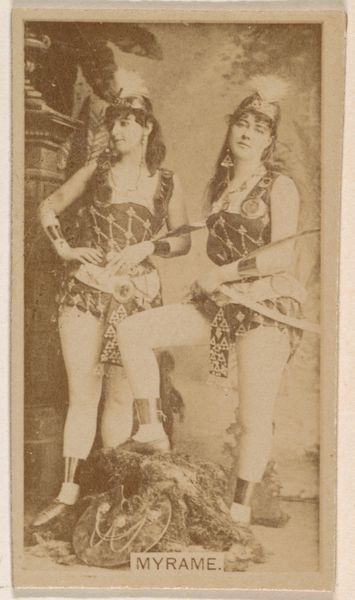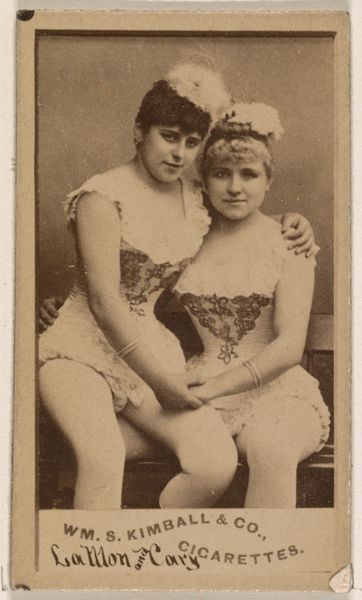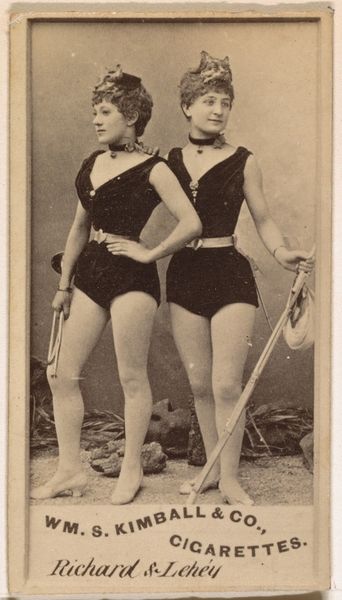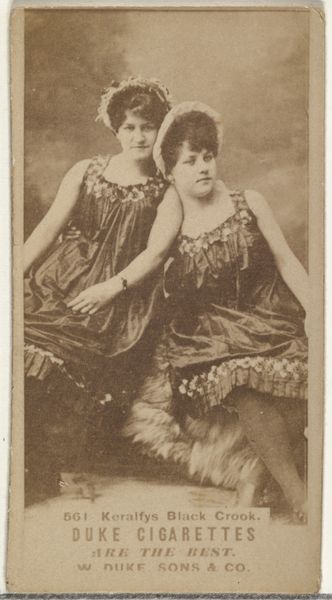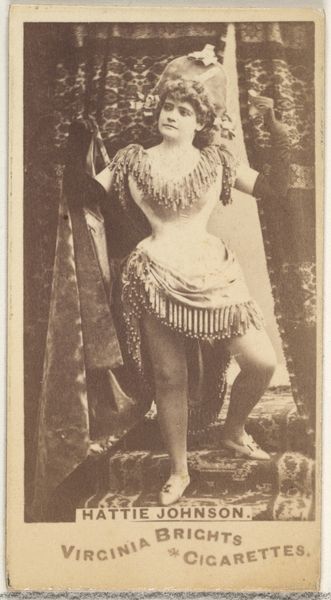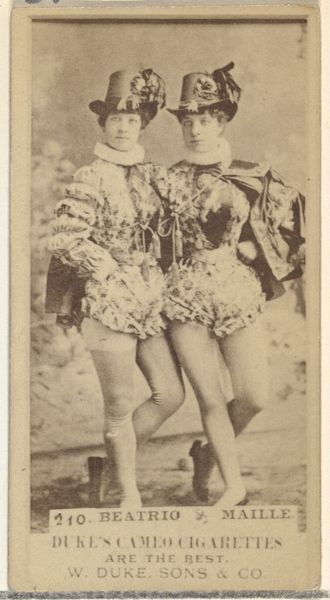
Card Number 363, Chapelle Sisters, from the Actors and Actresses series (N145-5) issued by Duke Sons & Co. to promote Cameo Cigarettes 1880s
0:00
0:00
drawing, print, photography
#
portrait
#
drawing
# print
#
photography
Dimensions: Sheet: 2 11/16 × 1 3/8 in. (6.8 × 3.5 cm)
Copyright: Public Domain
Curator: This card, dating from the 1880s, features the Chapelle Sisters. It’s from the "Actors and Actresses" series produced by Duke Sons & Co. as promotional material for Cameo Cigarettes, now held at the Metropolitan Museum of Art. Editor: Well, it's striking. There’s a very staged quality here— the symmetrical composition, the sisters’ identical poses. And despite being promotional, it's quite reserved in tone. Curator: Yes, the composition is highly structured. Observe the careful arrangement of the figures, their arms linked. There is a calculated use of space to emphasize balance and harmony in the piece, while the framing cuts their bodies creating an unusual object quality. Editor: To me, that staged quality screams of the turn-of-the-century industrialization of image-making. The sisters themselves become part of the apparatus— their image stamped and distributed, like the cigarettes. We're looking at an early form of advertisement exploiting performer popularity for marketing purposes. How do we perceive celebrity endorsement through materiality and accessibility? Curator: Your interpretation adds a crucial layer of understanding. From a formalist viewpoint, I’d also note the textural contrast, the crisp lines defining the figures, and the atmospheric haze behind them. Editor: The lithographic process itself becomes significant. Think of the layers of labor involved— the models, the photographers, the printers, the distributors— all converging in this tiny card meant to be consumed and then discarded. It’s an intimate artifact of mass production. The consumption, labor, performance—it all points toward celebrity creation for commerce. Curator: A valid insight. It underlines the intricate relationship between art, commercialism, and culture, demonstrating the piece's subtle yet poignant engagement with the socio-economic dimensions of its time. Editor: And, beyond its structured form, the piece offers insights into the labor and commodity-driven nature of culture. Examining the production and intention shows how context and material inform meaning, connecting art with social understanding.
Comments
No comments
Be the first to comment and join the conversation on the ultimate creative platform.
